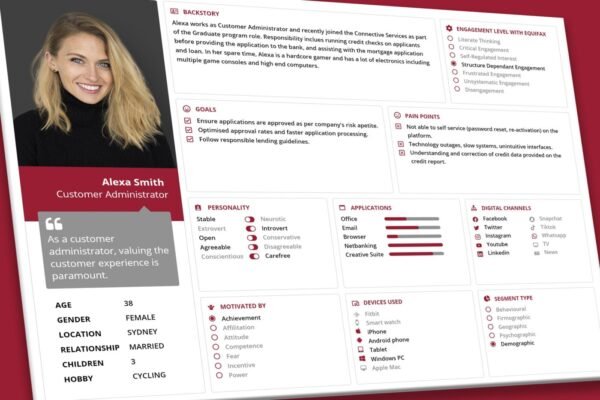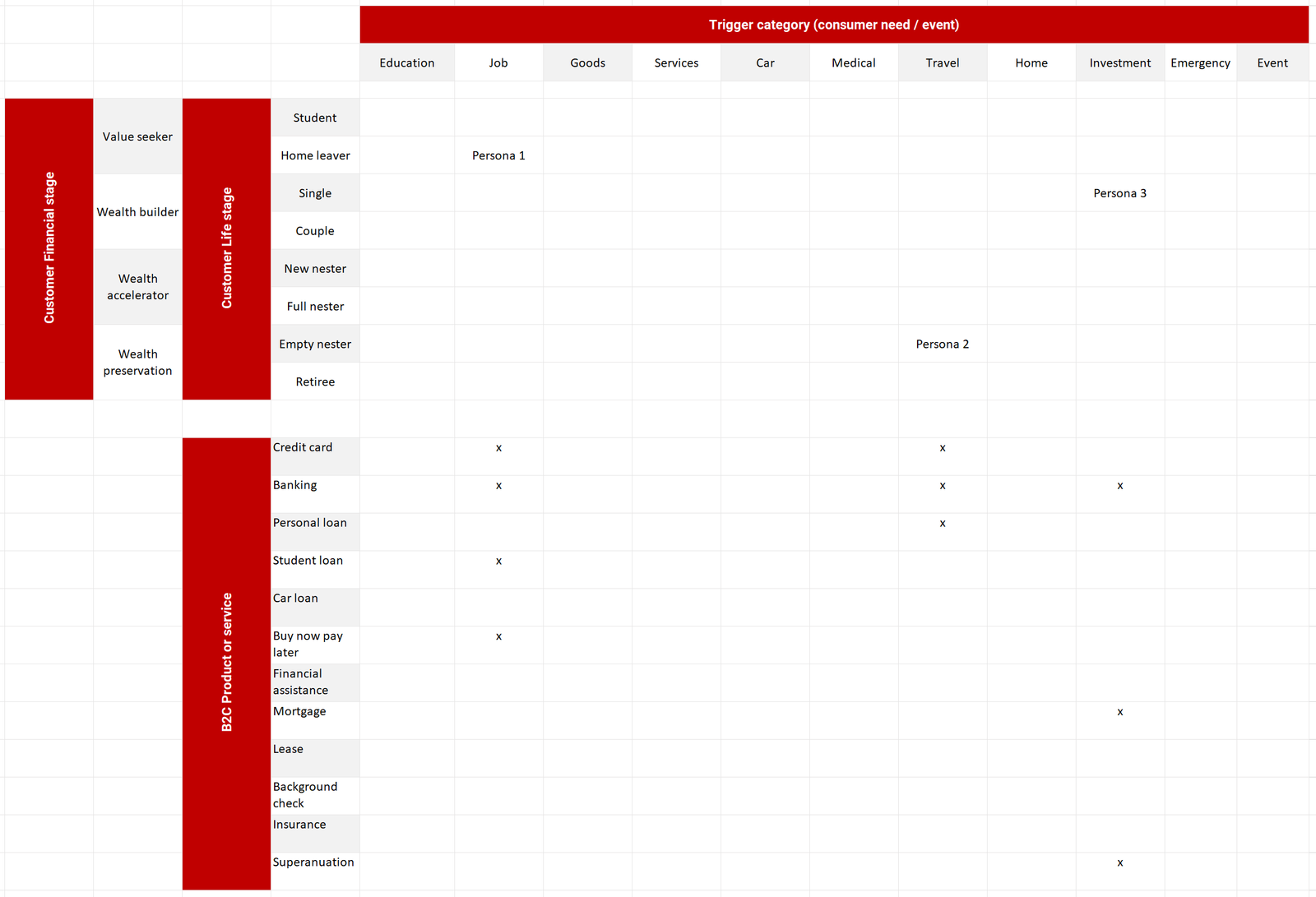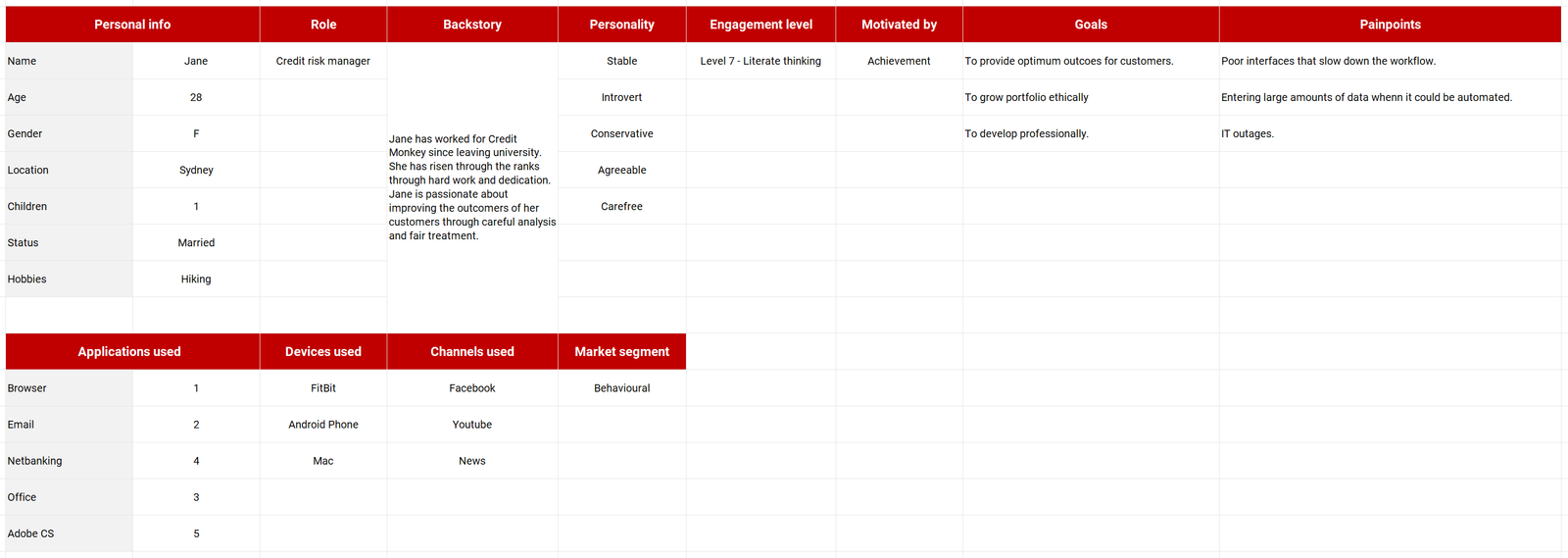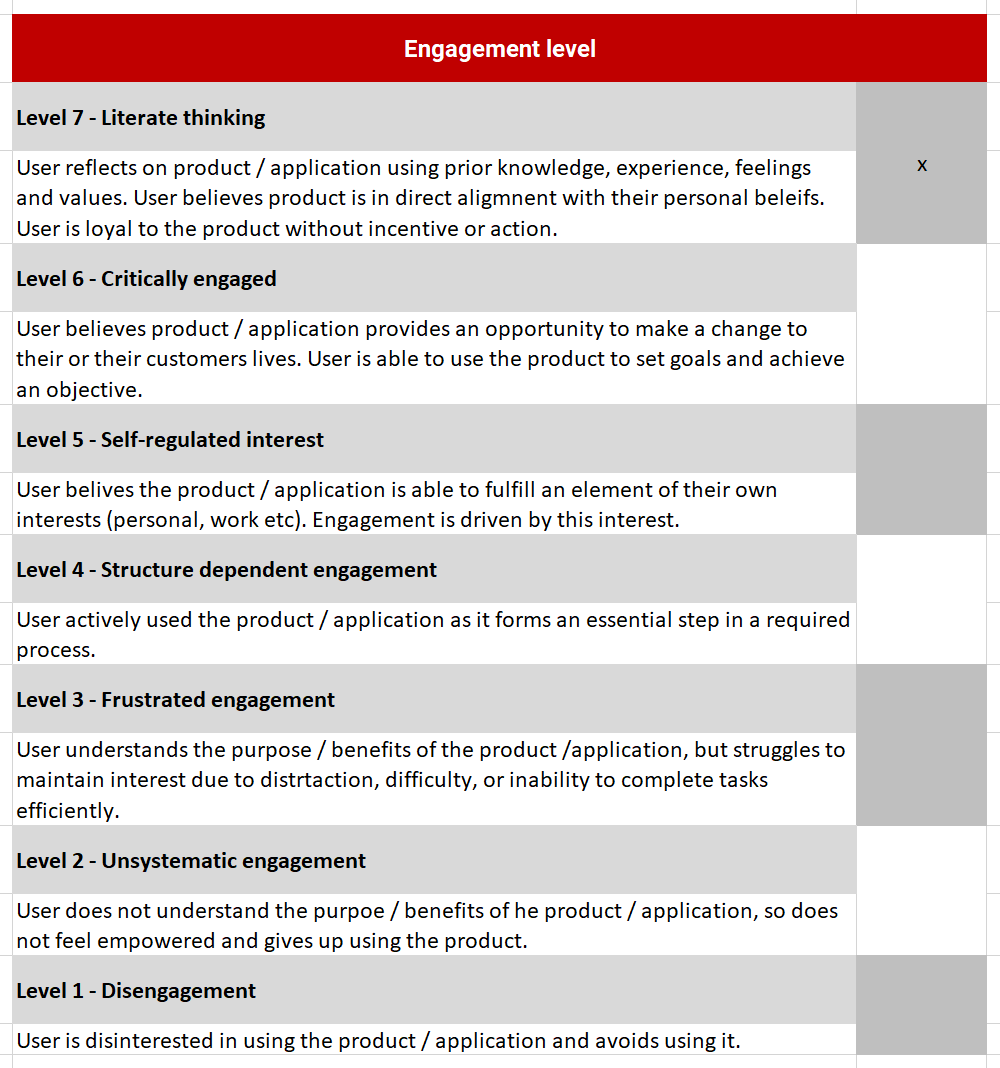Equifax personas
- Who: Equifax
- Product: Persona
- Type: Discoverable
- Activities: Stakeholder discussions, visual design
- Tools: XD
- Role: Lead UX designer


Personas inform stakeholders and designers alike of the characteristics of customers from key user segments who will be using the product. Personas do not tell us why a product is being created or how it will be used, but instead tell us who will use it.
The double diamond process provides 4 stages in the design process. Although it should be remembered that design is an iterative process, the double diamond approach does provide a usable framework for designers;
Personas are created at the discover phase. The goal of the discover phase is to take a deep dive into the problem we are trying to solve.
The first step in identifying who will use the product being designed is to segment the market. Segmentation allows designers to zero in on who we want to analyse. Although we can segment using any category, commonly defined categories include:
For this project, I focused on the end-customer which inhabits the demographic segment. I also used firmographic as our product was used by banks who then provided the product to individual customers.
I identified consumer needs / events by desktop research, creating a list of needs, grouping those needs, then finally meeting with SMEs to gather their feedback o the most appropriate categories. A similar approach was taken with the other elements on the segmentation axis. The goal of this was to clearly define the consumer:
Knowing the product being designed, a proposed persona can be placed on the matrix. This provides the persona life stage, financial stage, trigger / need, and product / service required. This amounts to aligning to the capabilities of the product being developed.
By looking at the financial / life stage of the persona, we can draw assumptions (which can be tested) as to the age of the persona as well as family structure and career goals. This can be cross referenced with market research, or simply by speaking to a subject matter expert with knowledge of the customers.
I undertook a series of interviews with subject matter experts to fill out the persona characteristics. However prior to this, I defined a template of content relevant to creating a persona that informed stakeholders involved in the design of the product. This Excel document allowed individual the expert to view the options on individual sheets while automatically populating the entire persona profile.
Standard content that gives a persona a human touch includes their interests, age, gender and hobbies. Content more relevant includes their role, motivations, goals and pain-points. I went a step further and defined a scale to measure the persona engagement with Equifax products.
I based the user engagement on the 7 Levels of Engagement for Marketers, but tweaked it to relate to Equifax products.



Once the workshops with subject matter experts concluded, I converted the data collected into high fidelity persona screens for viewing by stakeholders as required. Producing hi-fidelity artifacts at the stages of the UX process signals to stakeholders that stage is complete,
showing not just progress but also productivity.